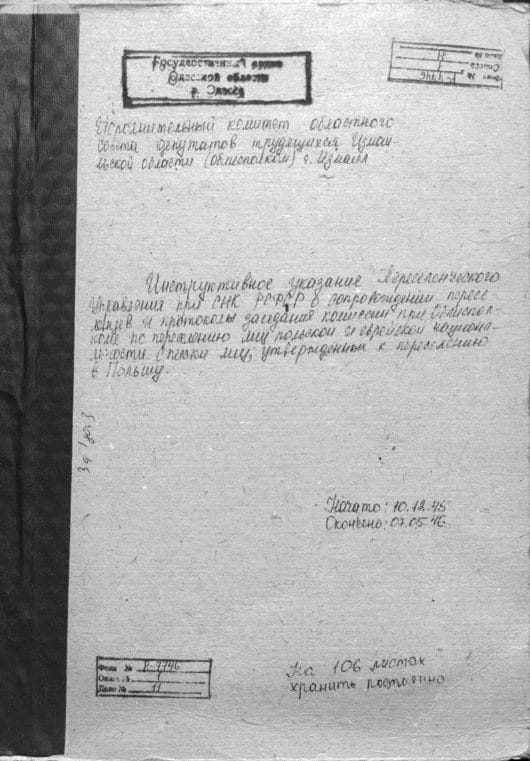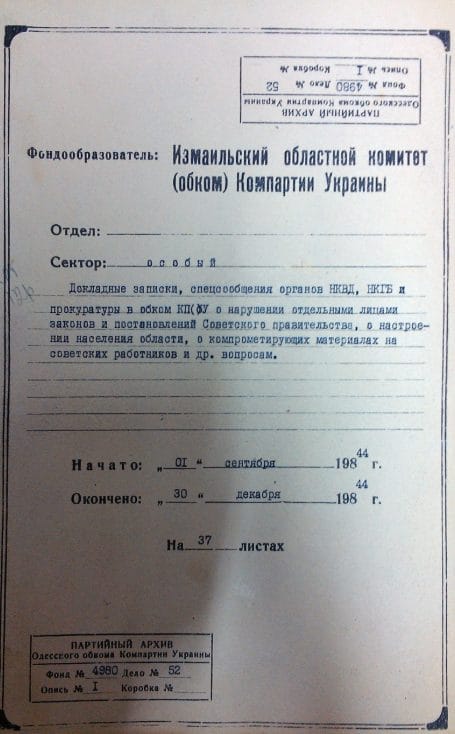Related sources:

Post-war Resettlement of the Polish Population from the Ukrainian SSR: Organization
The materials in the archive file below document the organization of the resettlement of Poles from the USSR in late 1945–early 1946, as well as the specifics of its implementation in the Izmail Oblast of the Ukrainian SSR. On July 6, 1945, an agreement was concluded between the Soviet leadership and the Provisional Government of National Unity of the Republic of Poland, granting persons of Polish and Jewish nationalities—who had held Polish citizenship before September 17, 1939, and resided in the USSR—the right to renounce their Soviet citizenship and move to Poland. To implement this agreement, a Soviet-Polish joint commission was established, which developed and approved instructions on the procedure for accepting and...

Complaints about Material and Living Conditions in Izmail in 1944 Based on NKVD Materials
This documentary source provides valuable information about complaints from Soviet citizens who arrived in the Izmail oblast concerning extremely difficult material and living conditions, low levels of property provision, and the negative attitude of the local population towards newcomers. The return of Soviet power to Budzhak (the historical name of the southern part of the Odesa oblast; in 1940–1941 and 1944–1954, the Izmail oblast of the Ukrainian SSR) in August 1944 was presented by official propaganda as a “liberation from the fascist yoke.” However, a significant portion of the local population, having experienced the Soviet occupation of 1940–1941, fled en masse to Romanian territory. According to the secretary of the oblast committee, very...

